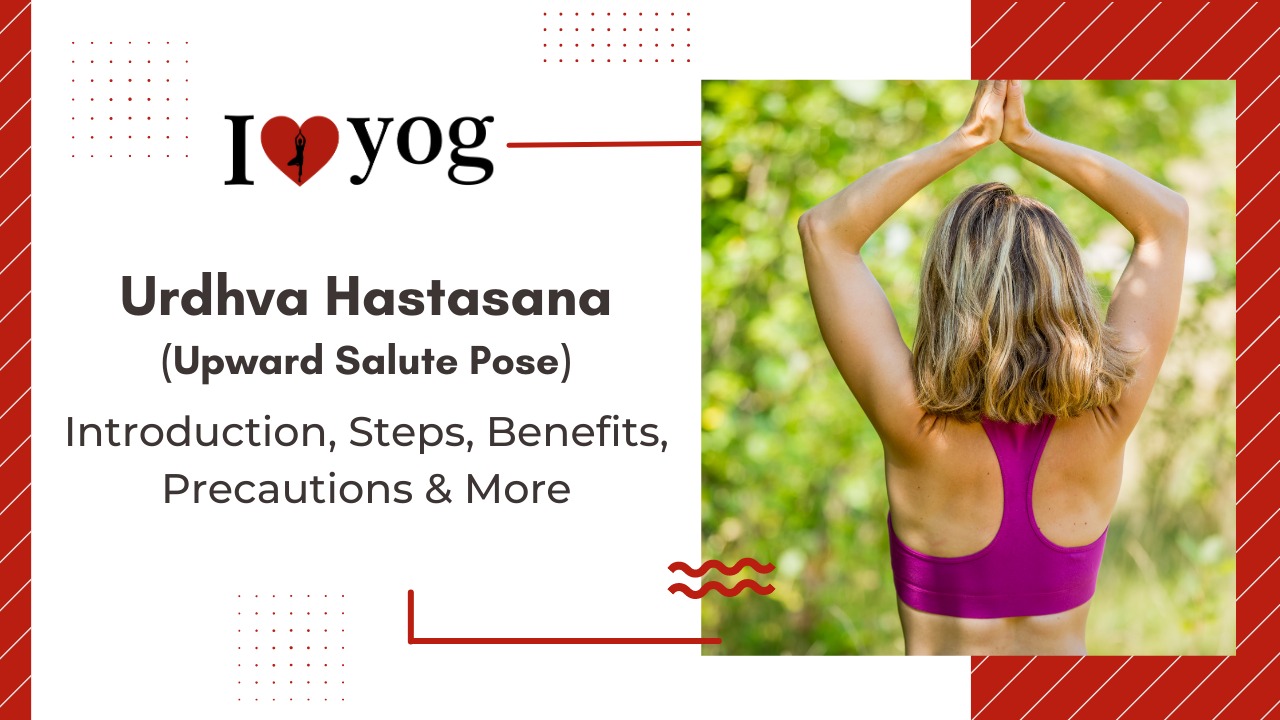What You Need to Know Prior to Performing Urdhva Hastasana?
The pose should be performed on an empty stomach in the morning.
– Even if practised in the evening or at any other time of day, the stomach, bladder, and bowel should be empty.
– If it is practised at any other time of day outside the early morning, the practitioner should consume food 4 to 6 hours prior to practise. This will ensure that the stomach is empty by the time the individual assumes the posture, and the energy obtained from the food will aid in performing the pose with ease.
Preparative Poses
- Tadasana (Mountain Pose)
Counter Poses
- Tadasana (Mountain Pose)
Uttanasana (Standing Forward Bend)
- Yogasana Level – Beginner
- Yogasana Style – Standing Stretch
- Yogasana Repetitions – after 1 minute.
- Yogasana Strengthens – Shoulders, full-body stretch.
- Yogasana Stretches – Shoulder, Axilla, and Navel
Urdhva Hastasana’s effect on tri dosha
How to Perform the Upward Salute Pose/Asana
- Begin in Tadasana, with your big toes touching and a sliver of space between your heels.
- From the base of the position, line your toes and distribute your weight evenly over the four corners of your feet. Ensure that your weight is evenly distributed.
- Engage your quadriceps and raise your kneecaps. Tuck the pelvis in.
- Inhale and lift your shoulders up to your ears; exhale and roll your shoulders down your back. This improves posture and elongates the spine.
- Hang your arms alongside your torso with your hands gently engaged and your fingers pointing towards the ground.
- Bring your head over your pelvis to create a long line of energy running from your head to your feet. Imagine that a cord is tugging your head’s crown towards the ceiling.
- Stretch out your neck. Bring your chin parallel to the ground and stare softly forward.
- Relax every facial muscle, including the forehead, the scalp, and the tongue. While completely relaxing the face, the rest of the body remains active.
- Slowly lift your arms straight over your head as you inhale, with your fingers pointed towards the ceiling and your palms facing each other. Exhale.
- As you inhale, elevate your shoulders above your ears, and as you exhale, roll them down your back to broaden your collarbones and stand taller.
- Release all facial tension and fixate on a single point in front of you.
- After five to ten breaths, carefully lower your arms to your sides and stand in Tadasana.
What Are the Benefits of the Upward Salute Asana?
- Invigorates and revitalises
- Improves posture
- Lengthens the backbone
- Stretches the arms and shoulders
- Improves concentration
- Relieves stress from the shoulders
- Improves circulatory health
- Promotes digestive system function
- Improves pulmonary performance
What Are the Contraindications and Precautions Regarding the Upward Salute Posture/Asana?
- If you have a shoulder and neck sprain, you should avoid it.
- You can also attempt it without elevating the arms completely over the head if the full version causes pain.
- Ensure that you have mastered the basic tadasana alignments before attempting this posture.
- It will serve as a preparatory pose for Urdhva Hastasana by stretching and balancing the body.
- To prevent injury to the lumbar spine and rib cage, draw the pubic bone towards the navel while stretching the spine.
- Arrange the knees on top of the ankles and the shoulders directly above the hips.
- Avoid During Migraine Attacks
- Insomnia
- Exhaustion
- Reduced Blood Pressure
- EDS
What Is the Science Behind the Salute Position/Asana?
Urdhva Hastasana is a standing pose that energises the entire body. Anyone can perform this pose on a daily basis, whether they are a trained yogi, an aspirant, or a beginner. Practicing Urdhva Hastasana at any time of day generates an instantaneous surge of energy throughout the body. By strengthening balance, strength, and body alignment, this position prepares the body for more advanced poses.
Tips For Beginning The Upward Salute Posture/Asana?
- If straightening your arms above your head is too challenging, you can use a yoga belt. Create a loop with the belt and wrap it over your arms just above the elbows. Adjust the belt so that your arms cannot separate further than shoulder-width apart. Afterwards, raise your arms above your head.
Advanced Changes in Pose
- Urdhva Hastasana without arms up
- Urdhva Hastasana balancing on toes
- Urdhva Hastasana with fingers interlaced
Related Yoga Poses/Asanas –
Reference:-


